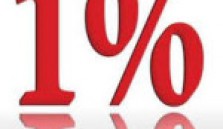
PAY FREEZE FOLLOWED BY SQUEEZE HITS NHS WORKERS HARD
NHS workers including nurses, paramedics, therapists and midwives face another year of financial hardship following today’s Government decision to impose a 1% increase. Condemning the 1%, UNISON the union which represents 450,000 health workers, said that the “squeeze on pay coming on the back of a two year pay freeze has left many health workers and their families struggling to make ends meet”.
The union hit out at the Government for undermining the independence and integrity of the Pay Review Body system saying that imposing a 1% increase, means that inflation will have stripped up to 12% off the value of NHS wages.
Christina McAnea, UNISON Head of Health, went on to say:
“What kind of message does it send to health workers about the value this Government places on their work? And what incentive is there for young people to join the NHS when they are so undervalued?
“Freezing and squeezing pay is crushing morale and heaping financial misery on more than a million NHS workers. At the same time, the NHS is going through a massive reorganisation and staff are dealing with job cuts, rationing and ever increasing patient numbers.
“Low pay is still a massive issue in the NHS, with thousands of staff being paid less than the Living Wage of £7.45 per hour.”
The union has reported more health workers including nurses turning to its welfare fund for help with rising fuel bills, debt advice and emergency loans.
UNISON’s Evidence to the Pay Review Body built up a picture of the pressures facing staff including:
· The competitive position of public sector pay against the private sector has been declining, with the gulf between private and public sector pay settlements growing ever larger over the last year and average earnings in the private sector running ahead of the public sector for most of the year.
· In the NHS, tiered pension contribution increases are likely to lead to a further reduction in take home pay, varying between 0% and 6% by 2015.
· The NHS non-medical workforce shrank by 2.1% over 2010/11. Thousands have suffered redundancy and estimates put expected job losses around the 50,000 mark.
· While staffing has been contracting, demand for services is on the rise across most of the NHS. Signs of stress are also showing on service delivery, with the largest fall ever recorded on public satisfaction levels by the British Social Attitudes Survey backed up by staff perceptions of decline in the quality of care. Furthermore, sustained pay suppression has undoubtedly fuelled industrial tension across the service.
· Incredibly, the vacancy data so crucial to assessing the competitive position of pay in the NHS has not been collected in England for the past two years. However, Scotland is showing vacancy rates on the rise.
· Projected commissioning of most professional groups within the NHS continued to show a decline after the major falls over 2011/12.
· It is anticipated that NHS finances will be under acute pressure from the Government’s reduction in the NHS financial settlement. Nonetheless, the NHS in England recorded a surplus of £1.6bn for the 2011/12 financial year and foundation trusts are predicting a further surplus of £326m. Scotland, Wales and Northern Ireland have also shown surpluses in their most recent accounts;
· The latest estimate of the impact of planned incremental rises from the Department of Health puts the annual increase in paybill costs at 1%, though a third of staff do not benefit from increments as they are at the top of their pay band.

